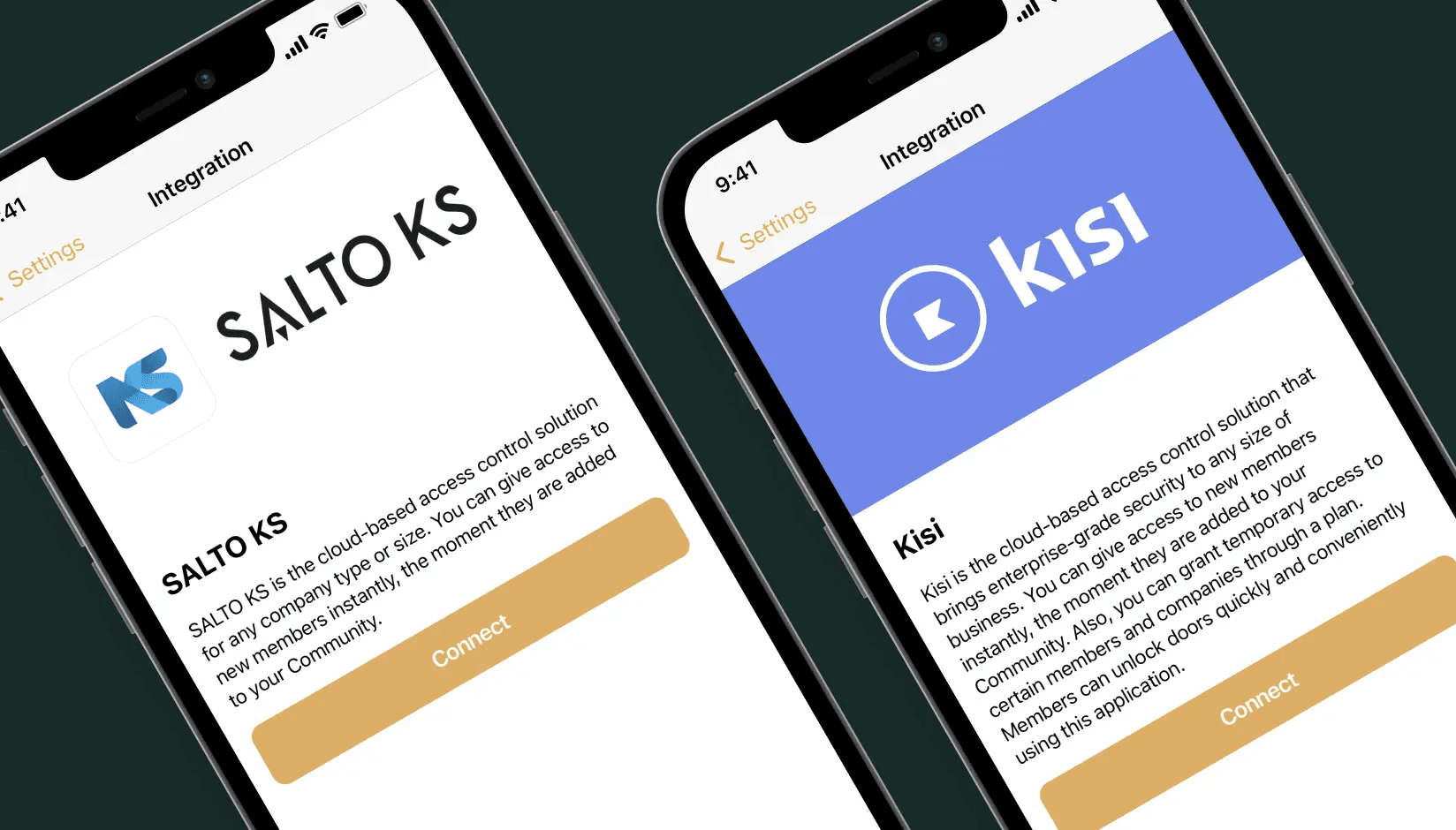- Features
- Solutions
- Pricing
- Resources
- Contact
- Book a demo
How to Protect Your Coworking Space Members Against Security Threats in 7 Simple Steps

“For every lock that exists, someone is making moves to pick it.” That is exactly the state of businesses and their fight against intruders and cyber attackers. Even with complex IT infrastructure and security solutions, cybercriminals find ways around the system to infiltrate networks and devices to steal data worth millions.
And this is for one organization only. If you manage a coworking space shared by start-ups, remote workers, and freelancers, the risk of cyberattacks is tenfold. This is because the coworkers use the open Wi-Fi network to access the Internet. In such a case, not only will it cause distrust among the members, but also blot your reputation.
At a time when security lapses and threats to businesses are at an all-time high, you should not take the security at your coworking space lightly.
Here are some ways you can protect your coworkers against security threats.
1. Secure Your Devices
Workplaces are full of desktops and laptops, and other smart devices. If these devices are insecure, they are a gateless gate for intruders to access data and the entire network. There are many preventive measures one can take to secure their devices. Some of the most effective ones are as follows:
- Password Protection and Encryption
Using passwords is the most basic yet effective measure to secure your devices. Use complex passwords, change them routinely and limit access to devices to workers only.
One of the best ways to ensure data safety is to use storage encryption. It ensures that digital files are encrypted while being shared and stored.
- Firewall
Windows and Mac devices have an inbuilt software firewall which may not be as effective as a hardware firewall, but it provides safety against the malicious outside network. So, ensure the software firewall is active on all devices connecting to your network.
- Real-Time Protection
Businesses must also use anti-virus programs that provide real-time protection when accessing local files and devices and browsing the web as well.
Also, use browser extensions like pop-ups, ad blockers, and VPN to ensure safe and secure web browsing.
2. Secure Your Network

Why hack into individual devices when you can compromise an organization's entire network? This is the philosophy of most cyber-attackers as they look to carry out grand-scale DOS, DDOS attacks, and data thefts. From 2018 till now, 66% of 30 million American SMBs have witnessed at least one cyber-attack, making a secure network an absolute necessity. Here is how you can prevent your network from hackers.
- Protect Your Wi-Fi
Wi-Fi at coworking spaces, like any public Wi-Fi, can be an easy target for hackers if left unprotected. So, set up strong passwords for each network, use protocols like WPA, and change passwords routinely. Using your automated Wi-Fi network, you can also create separate networks for different members, businesses, or visitors.
- Use Firewall
To protect your network, you must use a hardware firewall, a physical device installed to monitor in and outbound traffic and control access. Unlike a software firewall, it is a physical device that runs independently of devices like laptops and desktops.
Next, you should install WAF, Web App Firewall. It monitors and filters traffic between a web application and the Internet.
- Use VPN and Update Router Firmware
Routers are also prone to bugs, and you must update your router's firmware to fix those bugs. Also, use VPN to provide an encrypted connection to prevent data leaks.
3. Secure Your Data
The biggest reasons for hackers to target business is either to disrupt services and get ransom or leak sensitive data like customer and employee information and financial details. The average data breach cost increased from $4.2 million in 2021 to $4.35 million in 2022. So, here are some effective ways to protect your data.
- Use Encryption and Disable Public Sharing
If your coworking space members work with sensitive data, they must encrypt their files and folders for maximum protection. So, without encryption, key workers or outsiders cannot access your data.
It is common for workers to share files using wireless file transfer on laptops and mobile. It is a convenient way to share files but not advisable for businesses working with sensitive data. So, to reduce the chances of data breach to zero, disable public file-sharing services like Airdrop.
- Use Cloud Storage
Having several security measures to protect files can make data inaccessible and affect collaboration. So, use cloud storage services from Google and Microsoft to store documents; workers can open and edit them without downloading them. Changes are automatically saved, so even in case a hacker successfully blocks hacks into your network and devices, your files are up to date and safe on a remote server.
In the case that you’re combining on-site and cloud-powered storage solutions, you need to be cognizant of the security implications that comes with a hybrid setup such as this. The more assets and endpoints involved, the greater the need for comprehensive observability to truly secure mission-critical info. Using a hybrid cloud monitoring platform will give you the protection you need.
- Shred Physical Documents
Even in the age of digitization, if your coworking members hoard physical documents, it's time to utilize the good old paper shredder. Ensure these physical files have digital backups and shred outdated documents to prevent theft.
4. Focus on Physical Security

Connect the access control system with your coworking space management software
When cyber security is the biggest concern for businesses, it is easier to overlook the importance of traditional measures to secure physical office space. Still, commercial spaces are the biggest targets of break-ins and vandalism. In fact, more than 100k businesses report burglaries every year, so physical security is equally important.
- Security Equipment
The best way to prevent burglaries and break-ins into your coworking space is to install alarms and CCTV. A surveillance system relieves you from physically monitoring every movement at your facility.
- Access Control & Visitor Management
Small businesses, start-ups, and professionals mostly utilize coworking spaces, so members and visitors constantly move in and out. Without proper access control and a visitor management system, mischievous elements can easily move objects and files in and out. So, place smart locks and security checks at the entrance, use badges to identify members and visitors, and maintain a visitor's log.
- Security Personnel
Technological security solutions work great, but their effectiveness increases in the hands of seasoned security personnel. They can monitor movement in and out of the facility and act as first responders in case of emergencies.
Discover how hundreds of spaces worldwide unlock success and grow better with Spacebring
5. Establish a Model Code of Conduct
As much as security is your concern, it is also the responsibility of coworkers to ensure they are vigilant themselves. Members must understand the sensitivity of the information they work with and be in tune with the state of cybersecurity. The best way to ensure that people using your coworking space are being responsible is to enforce a model code of conduct such as:
- Use strong passwords and tweak them regularly.
- Enable 2-factor authentication on work-related apps and accounts.
- Avoid clicking on unknown links, pop-ups, and downloads.
- Never leave their work and personal device unattended or lock them safely in their storage.
- Use active firewalls, anti-virus software, and VPN even on their personal computers.
- Use company email or messaging apps to transfer work-related files rather than using instant wireless file sharing.
- Do not share sensitive details like usernames, passwords, and work-related information with anyone.
6. Hire IT and Cybersecurity Specialists
Cyber-attacks, especially the ones targeting businesses, are increasing in scale by the day and causing unprecedented damage. To effectively protect your space against these threats, you need specialists well-equipped with tools and knowledge to keep cybercriminals at bay. Having an IT team also allows you to provide
- Immediate help to coworking members in case they face cybersecurity issues, tech failure, or application bugs.
- You can hold regular cybersecurity-related sessions to make coworkers aware of the latest trends and best practices.
- Actively monitor the security of your networks.
7. Perform Regular Audits
Once security measures, personnel, and IT specialists are in place, there are still chances of hackers successfully infiltrating your security. They can carry out sneaky and silent attacks that your systems may fail to recognize and act against. Businesses and cybersecurity experts create a solution, cyber criminals do them one better and find a hundred ways around them. So, you must perform routine security audits to look for loopholes, test them against set standards, and implement new measures.
But, going through security logs, system logs, and other massive files is challenging and requires specialized, embedded analytics tools. Usually, businesses invest in additional IT infrastructure and analytics software and even deploy their own self-hosted security tools. But it is not cost-effective, especially for small and medium enterprises.
You can rely on a free-to-use no-code data science workbench to ease the auditing process. These are often available as web apps accessible from any device and require no coding to attain the same results as enterprise-level analytics tools and SaaS solutions. These apps are designed for non-technical users to help them explore data without writing any code.
Final Words
Workplace security, especially cybersecurity, is like the never-ending tail of a cat chasing mouse. With one threat patched, attackers will always be ready for new cyber threats. So, you must be proactive in implementing measures to prevent your business from these threats.
Leave no stone unturned and start by securing your devices and network, encrypting your data, investing in physical security measures, access control, and visitor management systems, and assembling a team of cybersecurity experts to create and maintain your security system. With all these measures, you do not have to worry about fighting threats but growing your business.
The article was written by Will Andrews. Will leads Product & Marketing at Gigasheet, a free, no-code big data spreadsheet for analyzing massive data files in CSV, XLS, JSON, LOG, PCAP, and more. Connect with him on LinkedIn.




